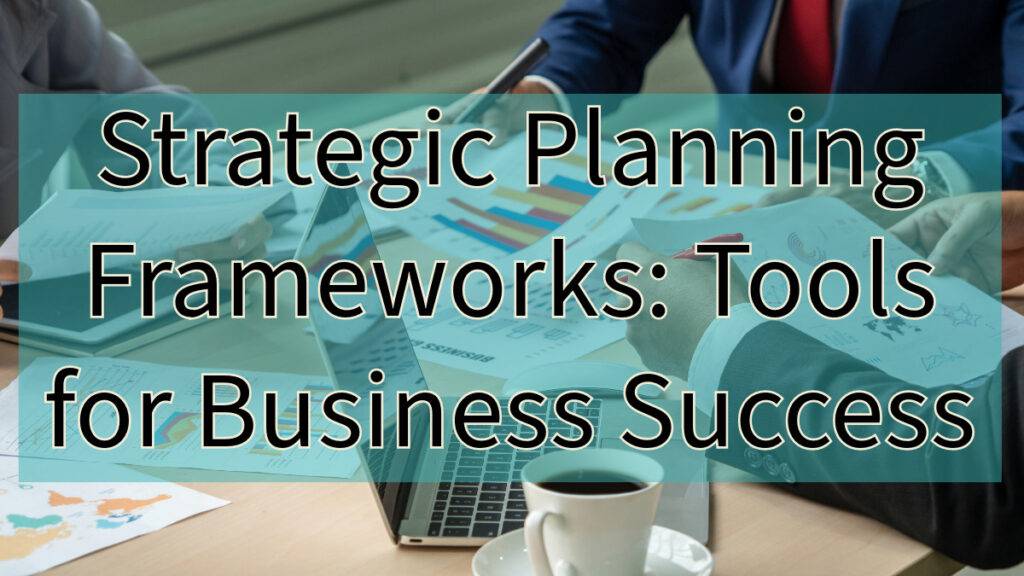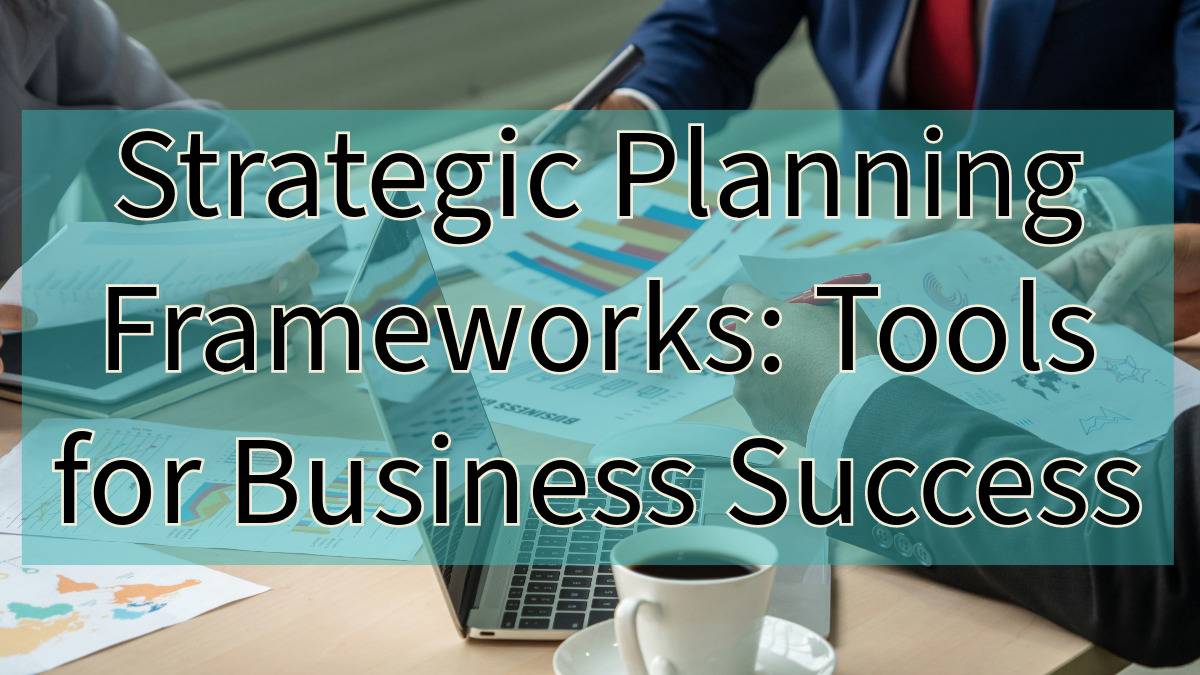In the ever-evolving world of business, the bridge between ambition and achievement is often built on the foundation of strategic planning. This vital discipline is more than simply charting a course – it aligns a company’s unique strengths with emerging market opportunities. Strategic frameworks are at the heart of this process, providing indispensable tools that offer structured pathways for analyzing, understanding, and maneuvering complex business terrain.
These frameworks are practical instruments that businesses, regardless of size or sector, can wield to break down challenges, identify growth opportunities, and craft strategies that resonate with their goals and market dynamics.
The tools presented in this article democratize strategic planning, making it accessible and relevant for enterprises across the spectrum, from nimble startups to established industry leaders. This exploration into strategic frameworks is not an academic exercise but an introduction to the methodologies that drive successful business decisions in a dynamic and competitive world.
SWOT Analysis
SWOT Analysis is a cornerstone in strategic planning, offering a clear, comprehensive framework for businesses to evaluate their position in the marketplace. An acronym for Strengths, Weaknesses, Opportunities, and Threats, this analysis encourages a balanced look at both internal and external factors that influence a company’s trajectory.
Strengths and Weaknesses focus internally, urging businesses to assess their resources, capabilities, and processes introspectively. Opportunities and Threats, on the other hand, turn the lens outward, evaluating market trends, competition, and external risks. The power of SWOT lies in its simplicity and clarity, making it a convenient tool for every business.
Key Elements
Strengths
- Definition: Internal capabilities and resources that give the business a competitive advantage.
- Examples: Strong brand reputation, skilled workforce, or proprietary technology.
Weaknesses
- Definition: Internal limitations or areas where the business may be lacking compared to competitors.
- Examples: Limited distribution network, outdated technology, or resource constraints.
Opportunities
- Definition: External factors or trends the business can capitalize on to grow or improve.
- Examples: Emerging markets, technological advancements, or shifts in consumer preferences.
Threats
- Definition: External challenges or risks that could negatively impact the business.
- Examples: New competitors, regulatory changes, or economic downturns.
Listing the SWOT elements is the easy part. Implementing the analysis effectively involves a strategic synthesis of findings to inform decision-making. For example, a company might leverage its strength (like a strong brand identity) to capitalize on an external opportunity (such as an emerging market trend) while simultaneously addressing a weakness (such as a limited online presence) to mitigate a potential threat (like increasing digital competition).
This actionable approach, blending introspective analysis with external market awareness, empowers businesses to strategically navigate their environment, aligning their resources and efforts with the most promising paths to growth and stability.
Porter’s Five Forces
Porter’s Five Forces model, a brainchild of Harvard professor Michael E. Porter, is a strategic tool for analyzing an industry’s competitive dynamics. It dissects the competitive environment into five key forces: the threat of new entrants, the bargaining power of suppliers, the bargaining power of customers, the threat of substitute products, and the rivalry among existing competitors.
Understanding Industry Dynamics
- Threat of New Entrants
- Barriers to entry and the ease with which new competitors can enter the market.
- Bargaining Power of Suppliers
- The strength and influence suppliers have over the cost and availability of materials.
- Bargaining Power of Customers
- The influence customers have on prices and quality expectations.
- Threat of Substitute Products or Services
- The likelihood of customers switching to alternative solutions or providers.
- Rivalry Among Existing Competitors
- The intensity of competition and how it affects pricing, marketing, and innovation.
This model enables businesses to assess industry attractiveness and the potential for profitability. For example, a high threat of new entrants may indicate lower barriers to entry, urging companies to innovate or improve efficiencies to maintain their market position. Similarly, the strong bargaining power of suppliers may push a business to diversify its supplier base or negotiate more favorable terms.
By understanding and applying each of these forces, companies can develop strategies that exploit industry strengths, counteract weaknesses, and capitalize on market opportunities. Porter’s Five Forces model thus serves as a foundational tool for businesses to strategically position themselves in the market for long-term success.
PESTLE Analysis
PESTLE Analysis acts as a comprehensive tool that scrutinizes the macro-environmental factors impacting a business. This acronym represents six critical dimensions: Political, Economic, Social, Technological, Legal, and Environmental. Each segment offers a different perspective on the external forces that can influence business operations and strategies.
Political factors might encompass government policies and trade regulations, while Economic elements include considerations like inflation and economic growth. Social aspects cover demographic changes and consumer behaviors, whereas Technological factors encompass innovation and digital transformation. Legal factors involve compliance with laws and regulations, and Environmental aspects focus on sustainability and ecological impacts.
Examining External Factors
Political: Government policies, regulations, and political stability affecting the business environment.
Economic: Economic trends such as inflation, interest rates, and economic growth that impact the business.
Social: Societal trends and cultural aspects that influence consumer preferences and market dynamics.
Technological: Technological advancements and innovations shaping industry and market practices.
Legal: Legal and regulatory requirements affecting business operations.
Environmental: Ecological and environmental factors, including sustainability and climate change issues.
Businesses can anticipate and adapt to external changes by systematically analyzing these areas, ensuring they remain competitive and resilient. For instance, a company expanding globally may use PESTLE to assess a new market’s legal and economic conditions, ensuring they make informed, strategic decisions about their international ventures.
Final Thoughts
In the fabric of business strategy, frameworks like SWOT, Porter’s Five Forces, and PESTLE are essential threads that weave together a thorough understanding of the business environment. Each framework provides unique insights and perspectives necessary for making informed strategic decisions. The key lies in selecting the proper framework that aligns with your specific business context and objectives.
Using these tools effectively, you can identify growth, innovation, and resilience paths in an ever-changing market landscape. I encourage you to integrate these frameworks into your strategic planning process, harnessing their power to navigate the complexities of business with confidence and foresight.
Before you go…
- Subscribe via email to receive future articles and updates.
- Share this post with friends and colleagues who may find it insightful.


